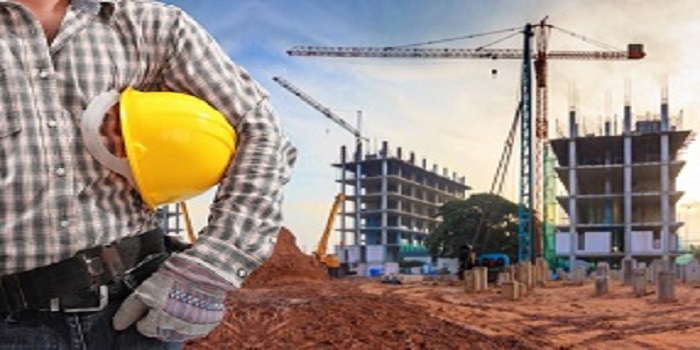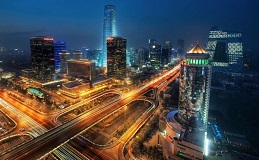International Joint Ventures and Merger & Acquisitions
International Joint Ventures and Merger & Acquisitions
December 02, 2021The Indian government is promoting Greenfield Investments in India by allowing 100% FDI, providing absolute freedom and control, and facilitating the business to achieve economies of scale and scope. Get to know about the rise and future of Greenfield Investments in India through this article
Greenfield Investments is a form of Foreign Direct Investment (FDI) where a company establishes new operations in a new geographical location from the ground up. This includes constructing new facilities such as manufacturing plants, offices and other infrastructure on undeveloped land. Businesses that opt for Greenfield Investments are the ones who seek maximum control over their foreign business operations, aiming to avoid intermediary costs and ensuring alignment with their strategic goals.
This investment model provides companies absolute freedom and control, facilitating the business to achieve economies of scale and scope. However, these benefits come with significant initial costs, including land acquisition, construction of facilities and commencement of operations.
The Indian government has been encouraging this type of investment by allowing 100% FDI under the greenfield model. Given the substantial capital involved, Greenfield investment requires a proper strategy and execution. There are two primary routes to enter India via Greenfield Investments:
There are certain sectors which necessitate government approvals or RBI approvals or both before the investment can be made, if the approval is given FDI up to 51% is permissible.
The World Investment Report 2024, published on 20 June, highlighted a significant increase in Greenfield FDI to developing economies in Asia. In 2023, these economies witnessed a 44% rise in the overall value of greenfield investment announcements dominated by the manufacturing sector followed on by the primary and the services sector. In Asia, Greenfield projects linked to the Sustainable Development Goals saw a modest rise. The number of projects in these sectors grew by 30% to 1,225 projects with a 54% rise in value, particularly in renewable energy, transport, and telecommunication.
In Southeast Asia, Greenfield announcements surged by 42%, adding $62 billion in value. India emerged as the third largest recipient of Greenfield projects with 1,008 project announcements. Furthermore, the number of international project finance deals in India increased by 64%, making the country the second largest recipient of such deals.
One notable investment is ExxonMobil decision to establish an INR 900 crores worth lubricants manufacturing plant in Maharashtra. This greenfield investment allowed ExxonMobil to enter the third largest lubricants market in the world, currently the size of USD 1.56 billion, with projections indicating growth to USD 1.8 billion market.
During April 2000-March 2024, India has had major FDI inflows, coming from Mauritius at with a total share of 25.31%, followed by Singapore at 23.56%, then USA at 9.6%, the Netherlands at 7.17%, and Japan at 6.17%.
Many greenfield investments project have been established to build infrastructure for airports around the country. Some of those projects are Noida international airport, airports in Itanagar, Kurnool, Sindhudurg, Mopa, and Kalaburagi.
Toyota Kirloskar Motor (TKM) has also announced a major expansion with plans to establish a new manufacturing plant in Maharashtra, with a strategy to strengthening its presence in India.
The Government of India has been working to increase the FDI inflows by implementing various policies in the economy. In fiscal year 2024, the states that attracted the most FDI in India are Maharashtra, Gujarat, Karnataka, Tamil Nadu and Telangana, Gujarat being the leader with the maximum amount of FDI received. The top 5 contributing countries to the maximum inflow of FDI were Mauritius, Singapore, USA, Netherlands, and Japan, with Singapore leading the pack by contributing over 11 billion U.S. dollars in FDI equity inflows. Mauritius followed with over seven billion dollars.
Among sectors, in fiscal year 2024, India’s computer hardware and software sector received the largest share in FDIs amounting to over 7 billion U.S. dollars. The services sector ranked second attracting over 6 billion dollars. Notably, the construction sector experienced a great increase in FDI inflows almost 300% of previous fiscal year, highlighting the growing appeal to foreign investors in infrastructure projects.
India’s future in attracting Greenfield Investment looks promising because of the growing economy, government initiatives like Make in India, favorable policies and tax concessions. Electric Vehicle (EV) policy is already in place to attract foreign companies, but the government is preparing to launch additional guidelines under the EV policy to further incentivize and attract more FDI. Moreover, recent amendments have also been made in the space sector by relaxing the FDI regulations, now with investment up to 100% foreign ownership.
India aims to achieve US$ 100 billion in annual Foreign direct investment (FDI) in the coming years with a consistent growth rate of 6-8% over the next decade. The growth will be supported by a well-developed strategy, positioning India as a key destination for Greenfield Investments.

Thank you for your interest. Write to us with your enquiries, questions or request a meeting with an expert to discuss your potential project. Our team will review and revert back shortly.
Here are some of the other related articles authored by our experts which might be of interest to you.

In past few years, impact investment has attracted lot of mainstream investors and everyone has been talking about it. A...

This article provides you an overview about an Alternate Investment Fund (AIF), the process of setting it up while adher...

Construction and other development projects attract a 100% FDI under automatic route. The government of India has been d...

The Pharma sector is likely to see a threefold jump in value with the rising income, greater health awareness, increased...

The Smart Cities mission was launched in 2015, with main objectives revolving around providing core infrastructure, clea...

With in-depth research on multiple sectors, industries, and potential outlook, here is the list of top 10 investment opp...